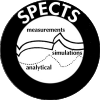Program Committee
Honorary Chair
Mohammad S. Obaidat
Monmouth Univ., NJ, USA
General Chair
Jose Sevillano
Univ. of Seville, Spain
Program Chairs
Raffaele Bolla
Univ. of Genoa, Italy
Pere Vilà
Univ. of Girona, Spain
Isaac Woungang
Ryerson Univ., Canada
Tutorials Chair
Sanjay K. Dhurandher
Univ. of Delhi, India
Publicity Committee
Essia Hamouda (Chair)
Univ. of California, Riverside, USA
Nathalie Mitton
INRIA Lille Nord Europe, France
Hannes Frey
Univ. of Paderborn, Germany
Local Arrangement Chair
Mamadou D. Seck
Delft Univ., The Netherlands
Publication Chair
Daniel Cascado
Univ. of Seville, Spain
Awards Chairs
Franco Davoli
Univ. of Genoa, Italy
Jose L. Marzo
Univ. of Girona, Spain
Webmaster
Antonio Bueno
Univ. of Girona, Spain
Sponsors
Sponsor
![]() The Society for Modeling and Simulation International
www.scs.org
The Society for Modeling and Simulation International
www.scs.org
Technical Co‑Sponsor
![]() IEEE Communications Society
www.comsoc.org
IEEE Communications Society
www.comsoc.org
Technical Sponsor
 IEEE SMC Society, Enterprise Information Systems TC and Information Assurance & Intelligent Multimedia-Mobile Communications TC
www.ieeesmc.org
IEEE SMC Society, Enterprise Information Systems TC and Information Assurance & Intelligent Multimedia-Mobile Communications TC
www.ieeesmc.org
Tuesday, June 28, 2011
Tutorial
Abstract
One of the main data delivery models in sensor networks is based on the time-driven paradigm. In time-driven sensor networks (TDWSN), communication is triggered by nodes, which regularly deliver sensor data to the sink. These data are then used for scientific purposes or for undertaking appropriate control actions. Typical applications fall in the context of environmental monitoring. Although random deployment is sometimes the only feasible way to develop a sensor network, it is common that TDWSN are deployed in a structured manner, either by selecting strategic locations or by adopting some regular sampling pattern. In these cases, the resulting deployment is rather sparse, fact that leads to intrinsic design challenges.
Accordingly, the purpose of this tutorial is to provide an insight into the design issues associated with time-driven sensor networks. More specifically, the tutorial will address the tradeoffs that arise in the development of mechanisms and strategies at the MAC and routing layers of the protocol stack. However, rather than exclusively providing details about existent solutions, the tutorial will follow a bottom-up methodology consisting of highlighting the main challenges and describing author’s research contributions in the context of current state of the art.
Outline
- Overview of data category models in sensor networks
- Energy-consumption issues in time-driven sensor networks
- MAC layer design tradeoffs and proposed solutions
- Network layer design tradeoffs and proposed solutions
- Overview of some application fields: forest fire prevention, vineyard monitoring, acoustic contamination
- Conclusions and further research
Tutorial duration
1.5 hours
Target Audience
Academics, researchers and industry practitioners with some basic background in computer networking.
Instructor's resume
Dr. Sebastià Galmés received his degree of Electrical Engineer from the Universitat Politècnica de Catalunya (Barcelona, Spain) in 1989 and his Ph. D. degree in Computer Science from the Universitat de les Illes Balears (Palma, Spain) in 1999, where he is currently Associate Professor in the Department of Mathematics and Computer Science, and leading researcher of the Performance Engineering Group (PEG). He was visiting professor at the North Carolina State University during academic year 1992-1993. His research interests encompass discrete-time traffic modelling, performance evaluation of communication networks, design of wireless protocols, wireless sensor networks, cognitive radio networks and nano-networks. He is a member of the IFIP WG 6.3 Performance of Computer Networks since 1999 and of IEEE Communications Society since 2010. He has published in relevant conferences and journals such as ACM Sigmetrics, IEEE Infocom, IFIP Networking, IEEE Mascots, International Teletraffic Congress and Computer Networks Journal. Also, he has occasionally collaborated as reviewer and technical program committee member respectively in several journals and conferences including Telecommunication Systems, Communication Letters, Ad Hoc Networks, Journal of Systems and Software, Transactions of the Society for Modelling and Simulation International, The Computer Journal, the International Journal of Communication Systems, IEEE INFOCOM and IFIP NETWORKING, and he has been involved in several national, European and international funded projects. He is co-editor of Network Control and Engineering for QoS, Security and Mobility, III. Recently, he has been granted a research excellence from his university, and has been appointed Area Editor for the Simulation Modelling Practice and Theory journal.
Contact information
Dept. of Mathematics and Computer Science
University of Balearic Islands
Cra. de Valldemossa, km. 7.5
07122 Palma de Mallorca, Spain
Email: sebastia.galmes@uib.es
